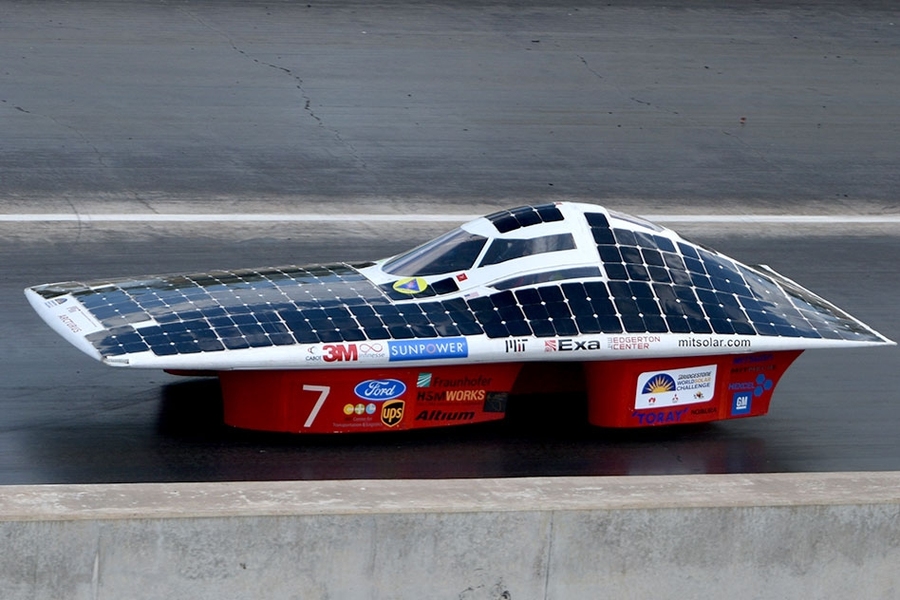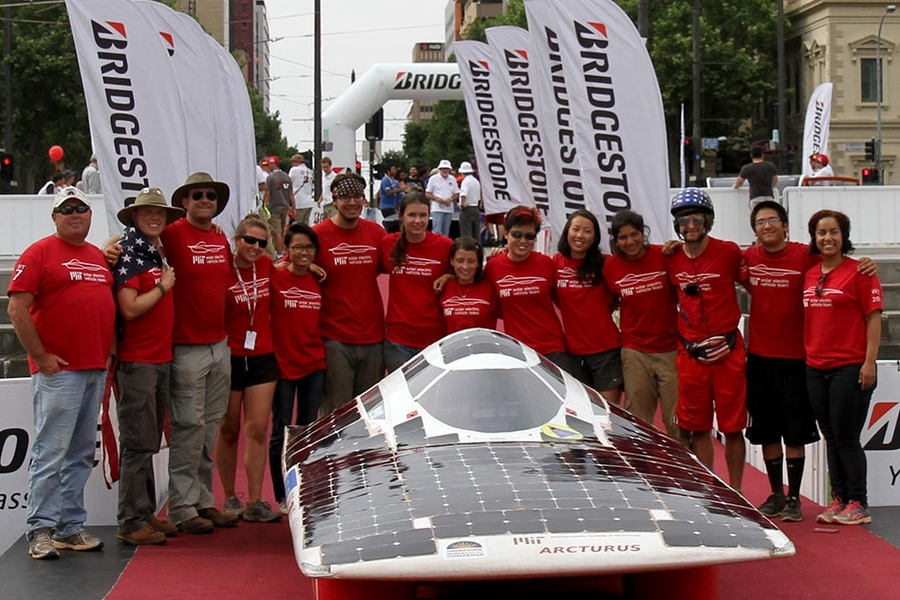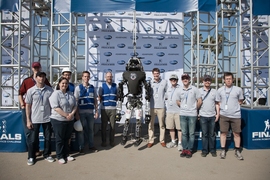Laboring for countless hours on the lower body layup, sleeping under the stars in Australia, seeing one’s brake mounts in action for the first time: These memories and countless others go down as favorites for members of the Solar Electric Vehicle Team who raced their vehicle Arcturus in the 2015 Bridgestone World Solar Challenge (WSC).
Held every other year, the WSC challenges students to design and build an efficient electric vehicle that can travel 3,000 kilometers across the Australian continent — from Darwin to Adelaide — powered by sunlight. The eight-day challenge “seeks to inspire some of the brightest young people on the planet to address the imperatives of sustainable transport,” according to the WSC website.
Competing in the Challenger class, in which vehicles can average over 90 kilometers per hour — and against teams with twice as many members — Arcturus performed well for the initial stage of the race. On the second day, however, a short in the electrical system burned out some of the electronics, and the team lost two valuable hours of driving time.
In the latter part of the challenge, intermittent connectivity issues between the battery management system (which ensures the batteries are safe) and the rest of the car caused the car to turn itself off. The team then had to wait until the battery management system gave the green light to continue driving. Ultimately the team made it to the finish line in Adelaide for the celebration and placed 23rd in a field of 29 vehicles.
The team's talent for working together in the face of adversity impressed Edgerton Center staff member Pat McAtamney, who traveled with the team to Australia. “Everyone had a job, and they worked like one seamless unit to get the car back up and running as soon as they could. These are kids who have been on the road together for five to six days, sleeping outside. There were no weak links,” remarked McAtamney.
Nerd Olympics
Team member Priya Kikani, a junior at MIT, loved her experience at the WSC: “With all the different countries displaying their flags, I felt like I was at the nerd Olympics. I learned so much from my teammates on how to come up with engineering solutions under pressure with limited resources and time. And the Australian Outback felt like another planet; it was so cool to see the southern constellations and watch the sunrise every morning.”
Alice Guan, mother of alumni team member Kelly Ran MEng ’13 who traveled to Australia for her third time with the Solar Electric Vehicle Team, had some sage words for the team: “Ten, 20, 30 years from now, few will recall the placement of SEVT’s Arcturus in the race, but the learning experience will benefit them a lifetime, from the very moment they gained it.”
“The team has as its priority driver safety and learning experiences and I embrace that priority wholeheartedly,” she added.
Rose Abramson ’15, who was team captain for the WSC, saw the experience as immensely valuable. “It really brings you out of your design bubble to see the ways other people have attacked the problem.”
The future looks bright
Now that the team is back home, they have a little time to sit back and evaluate next steps. The team has plans to improve the current car while designing the next vehicle in parallel. There are many new members who have helped the team by questioning design paradigms and embarking on hands-on projects.
Kikani, who is now the team captain, says that based on the work the new team members have already done in designing components and learning manufacturing skills, “the future looks bright, and I am very excited for an MIT solar car.”











